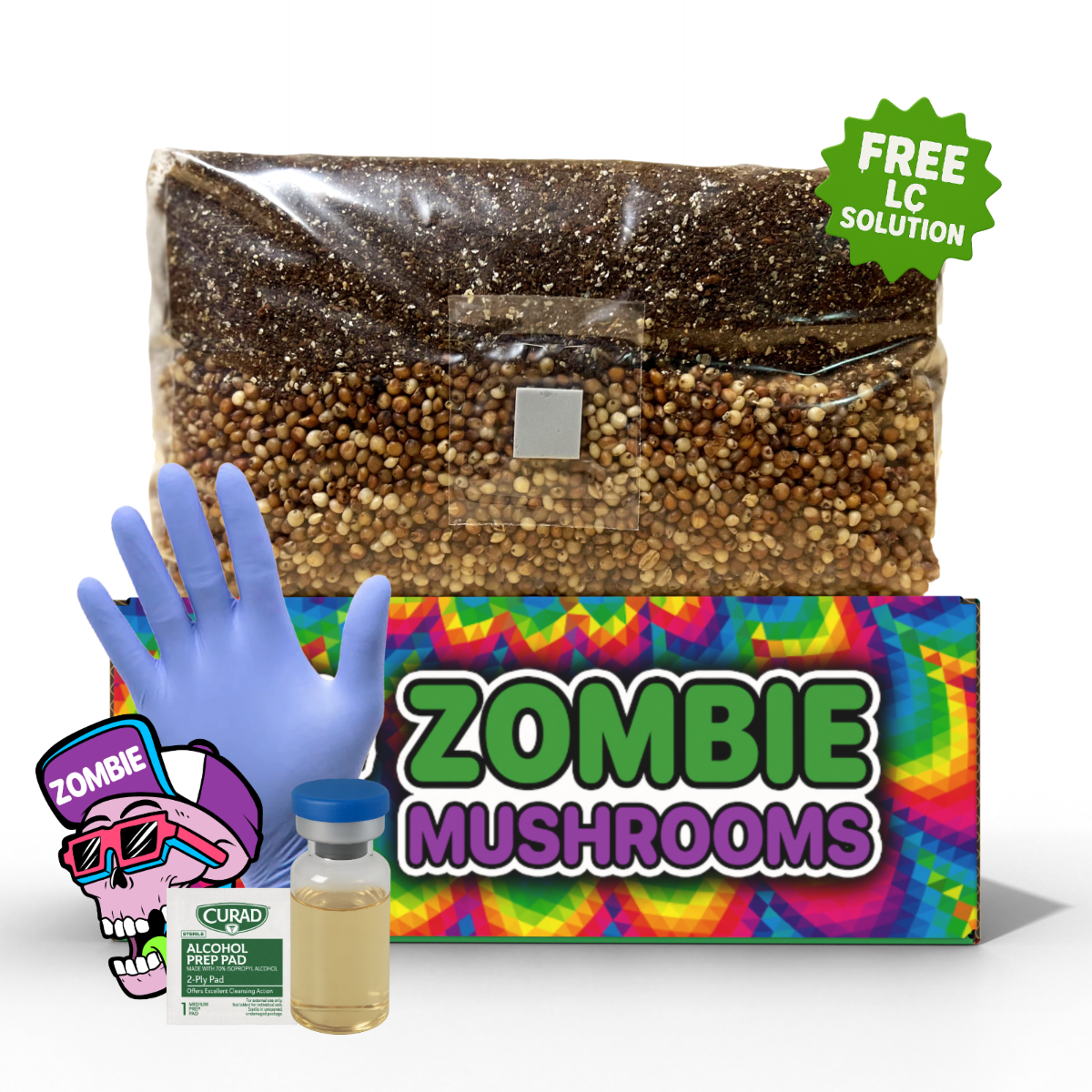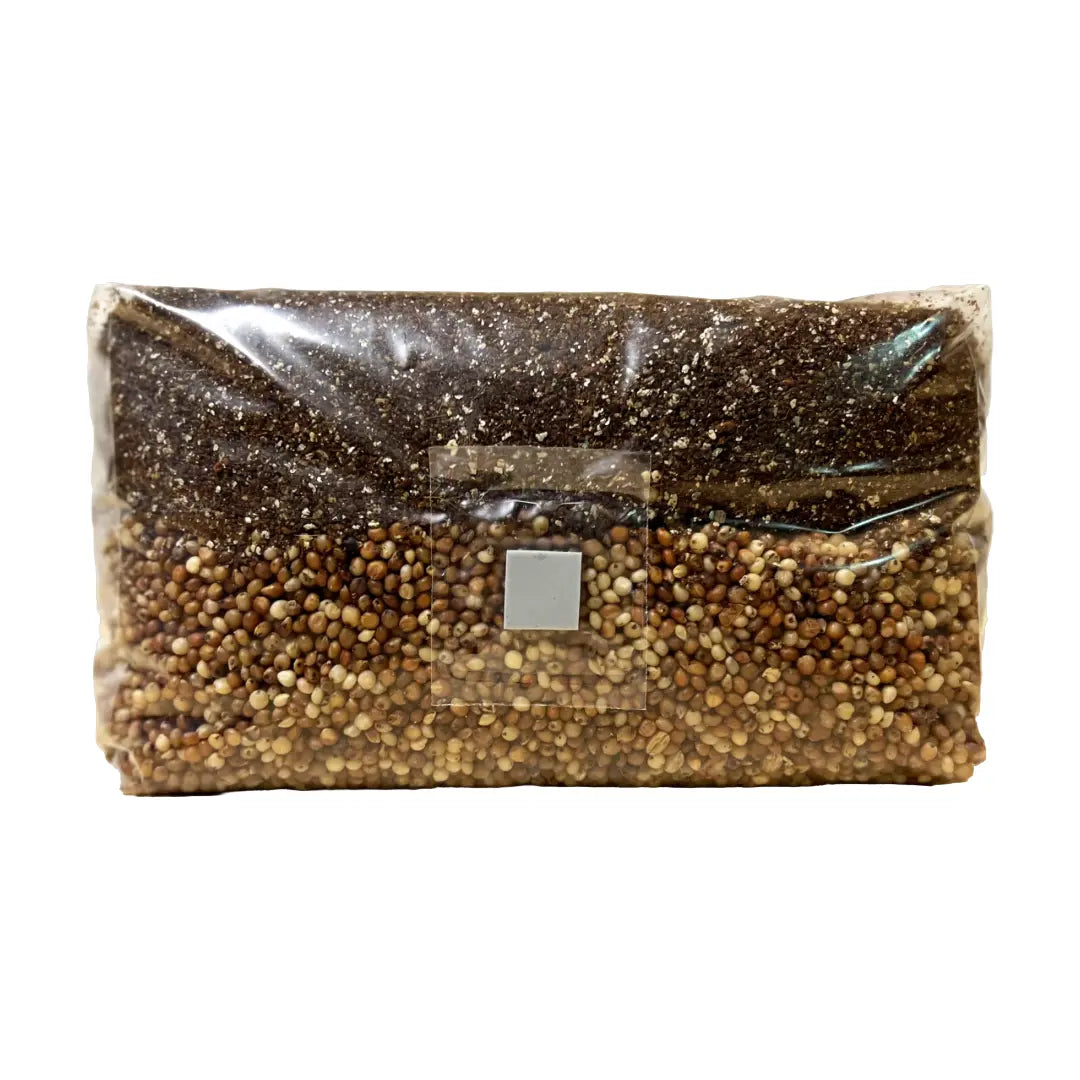- Oyster mushroom cultivation is among the simplest methods for growing gourmet mushrooms at your home due to their adjustability and quick growth.
- A variety of bases, including straw, coffee grounds, and sawdust, can be used for oyster mushroom growing.
- Correct humidity and fresh air exchange are vital for successful fruiting and high yields.
- Oyster mushrooms can give multiple harvests (flushes) before the base is used up.
- Used mushroom base can be composted, reused, or repurposed to lessen waste and improve soil.
Growing oyster mushrooms at home is deeply satisfying—and easier when you start clean. Colonize your substrate in Mushroom Grow Bags, then fruit right in the bag or transfer to Monotubs for larger clusters and repeat flushes. With simple bases like straw, coffee grounds, or hardwood sawdust, you’ll get fast spawn and cultivation progress, smooth oyster mushroom substrate preparation, and dialed-in oyster mushroom fruiting conditions. This guide shows you how to choose materials, optimize the environment, and time harvests for multiple, high-quality flushes.

Why Grow Oyster Mushrooms?
Oyster mushrooms offer many benefits that make them a great choice for home cultivation
Easy to Grow
Among all edible mushrooms, oyster mushrooms are one of the easiest to grow. They aggressively colonize bases, outcompeting contaminants, and can do well in a variety of environments with minimal monitoring.
High Nutritional Value
Oyster mushrooms are rich in protein, vitamins (B-complex, vitamin D), minerals, and antioxidants. They also contain beta-glucans, which may boost immune function and have anti-inflammatory properties.
Fast-Growing Crop
Unlike other mushrooms that may take months to grow, oyster mushrooms can go from inoculation to harvest in as little as three to four weeks. This rapid turnaround makes them ideal for beginners and small-scale growers.
Small Space Cultivation
Oyster mushrooms can grow in buckets, plastic bags, or trays, making them a perfect option for those with limited garden space. You can even grow them in a dark cabinet or a closet.
Eco-Friendly and Sustainable
Oyster mushrooms do well on agricultural byproducts, such as coffee grounds, cardboard, and sawdust, making them a great way to recycle organic waste. By growing them at home, you lessen reliance on store-bought produce and minimize packaging waste.

Getting Prepared: Essential Supplies
To start oyster mushroom growing, you'll need the following materials
- Oyster mushroom spawn – This is like the mushroom's equivalent of seeds. You can buy grain spawn or sawdust spawn from online suppliers.
-
Substrate (growing medium) – Common bases include
- Straw – One of the best bases due to its availability and affordability.
- Coffee grounds – A great zero-waste option, but should be mixed with other materials to improve aeration.
- Hardwood sawdust or wood pellets – Ideal for many oyster mushroom types.
- Growing containers – These can be plastic bags, buckets, or trays with holes for airflow.
- Humidity and air control tools – A spray bottle, a small fan, and a humidity tent (or plastic covering) will help regulate growth conditions.

Oyster Mushroom Substrate Preparation
-
Choosing Your Substrate:
Select from straw, hardwood sawdust, or recycled materials like coffee grounds or cardboard. Straw is affordable and forgiving for beginners; sawdust works well for many oyster strains but benefits from more precise moisture content. -
Treating the Substrate:
Pasteurization (e.g., soaking straw or coffee grounds in ~65–80°C water for about 1 hour) is sufficient for many bases. For richer or more contaminated materials, sterilization helps reduce risk. -
Hydration & Packing:
Ensure the substrate is damp, not waterlogged—when squeezed, just a few drops of water should come out. Pack the base into bags or containers loosely enough for airflow but dense enough for moisture retention.

Inoculating Your Oyster Mushroom Substrate
Once the base is ready, follow these steps
- Mix mushroom spawn with the base – Use clean hands or gloves to minimize contamination risk.
- Maintain a suggested spawn-to-base ratio – A 10-20% spawn-to-base ratio results in faster colonization.
- Pack into containers – Distribute evenly with slight compaction to promote airflow.
- Seal or cover growing containers – Ensure there are small holes for gas exchange.

Incubation Stage: Developing Healthy Mycelium
At this stage, the mushroom mycelium (the root-like network) colonizes the base
- Temperatures should be 20-25°C (68-77°F) – Warmer conditions increase colonization speed.
- Place in a dark location – Light is unnecessary during this phase.
- Monitor for full colonization – After 1-2 weeks, the base should appear fully white with mycelium.

Oyster Mushroom Fruiting Conditions
-
Fresh Air & Light:
Move containers or grow bags into a location with good airflow. Use indirect sunlight or artificial light on a 12-hour cycle to initiate pinning. -
Humidity Control:
Maintain relative humidity between 85-95%. Mist the substrate twice daily or use a humidity tent or cover to retain moisture without saturating the substrate. -
Temperature & Moisture:
Aim for temperatures of about 20-25°C during colonization, lowering slightly to ~16-20°C for fruiting. Avoid letting the substrate dry out; slight drying between flushes helps trigger further fruiting.

Tips for Harvesting Oyster Mushrooms & Getting Multiple Flushes
-
Harvest Timing:
Pick mushrooms just before the caps flatten and gills begin to show spore dust. Use a sharp knife or scissors, cutting close to the base to avoid damaging remaining mycelium. -
Storing After Harvest:
Fresh oyster mushrooms keep best in a paper bag, refrigerated; consume within 5-7 days. -
Flushing Again:
After the first flush, allow the base to rest for 5-7 days. Lightly dry the substrate, then rehydrate by misting or dunking to trigger the second flush. Many growers achieve 2-3 good flushes before the substrate base is depleted.

Sustainable Ways to Reuse Spent Mushroom Substrate
Even after production stops, the used base has multiple uses
- Compost it for soil improvement – Mycelium-infused material enhances garden soil fertility.
- Use as a mulch – Protects garden plants by retaining moisture while feeding beneficial microbes.
- Feed it to worms – Worms consume the used base and create nutrient-rich vermicompost.
- Reinoculate with new spawn – Some growers mix old base with fresh material for renewed growth.

Beginner-Friendly Oyster Mushroom Grow Kits
If you’re not ready for DIY mushroom growing, these kits can simplify the process
- Blue-Grey Oyster Mushroom Kit – Produces classic, meaty oyster mushrooms.
- Yellow-Gold Oyster Mushroom Kit – Grows visually stunning, bright yellow oyster mushrooms.
- Mushroom Kit Bundle – Provides a mix of varieties for an exciting experiment.
- Lion’s Mane Mushroom Kit – While not an oyster mushroom, it’s a great beginner-friendly option.
FAQ
-
What are ideal substrate materials for oyster mushrooms?
Straw, hardwood sawdust, recycled paper or cardboard, and coffee grounds are all good options. Balance cost, availability, and moisture content. -
How long does colonization take for oyster mushrooms at home?
Typically 1-2 weeks for full colonization under optimal conditions (20-25°C) after inoculation with spawn. -
What conditions encourage a large flush of oyster mushrooms?
High humidity (85-95%), fresh air exchange, indirect light, and stable temperature. Also, harvesting before spore drop helps maintain health for future flushes. -
Can I reuse substrate for oyster mushrooms?
The spent substrate can be composted or mixed with new substrate; occasionally some growers re-inoculate used base with additional spawn for minor growth, but performance generally decreases after multiple flushes. -
How do I avoid contamination when growing oyster mushrooms at home?
Use treated/pasteurized substrate, clean spawn, clean hands or gloves, and ensure containers have proper airflow and not overly wet areas.
Growing oyster mushrooms at home is a fun and sustainable way to enjoy fresh, flavorful mushrooms while lessening waste. Whether you start with a kit or cultivate from scratch, oyster mushroom cultivation is an exciting skill that brings worthwhile results.
Citations
- Stamets, P. (2005). Mycelium Running: How Mushrooms Can Help Save the World. Ten Speed Press.
- Royse, D. J. (2014). Mushroom Growers Handbook. Penn State University.
- Beyer, D. M. (2017). "Oyster mushroom cultivation techniques." Penn State Extension. https://extension.psu.edu/oyster-mushroom-cultivation



